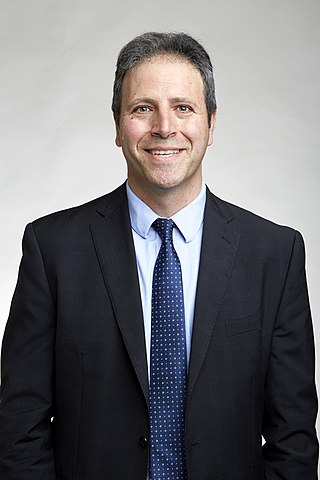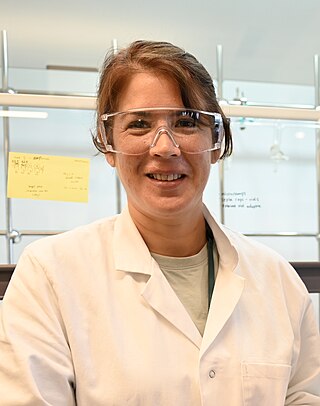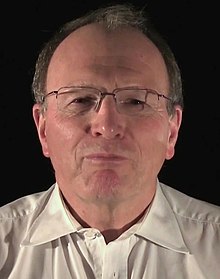
Organic electronics is a field of materials science concerning the design, synthesis, characterization, and application of organic molecules or polymers that show desirable electronic properties such as conductivity. Unlike conventional inorganic conductors and semiconductors, organic electronic materials are constructed from organic (carbon-based) molecules or polymers using synthetic strategies developed in the context of organic chemistry and polymer chemistry.

Conductive polymers or, more precisely, intrinsically conducting polymers (ICPs) are organic polymers that conduct electricity. Such compounds may have metallic conductivity or can be semiconductors. The main advantage of conductive polymers is that they are easy to process, mainly by dispersion. Conductive polymers are generally not thermoplastics, i.e., they are not thermoformable. But, like insulating polymers, they are organic materials. They can offer high electrical conductivity but do not show similar mechanical properties to other commercially available polymers. The electrical properties can be fine-tuned using the methods of organic synthesis and by advanced dispersion techniques.

Albert Jakob Eschenmoser (5 August 1925 – 14 July 2023) was a Swiss organic chemist, best known for his work on the synthesis of complex heterocyclic natural compounds, most notably vitamin B12. In addition to his significant contributions to the field of organic synthesis, Eschenmoser pioneered work in the Origins of Life (OoL) field with work on the synthetic pathways of artificial nucleic acids. Before retiring in 2009, Eschenmoser held tenured teaching positions at the ETH Zurich and The Skaggs Institute for Chemical Biology at The Scripps Research Institute in La Jolla, California as well as visiting professorships at the University of Chicago, Cambridge University, and Harvard.
Laura Lee Kiessling is an American chemist and the Novartis Professor of Chemistry at the Massachusetts Institute of Technology. Kiessling's research focuses on elucidating and exploiting interactions on the cell surface, especially those mediated by proteins binding to carbohydrates. Multivalent protein-carbohydrate interactions play roles in cell-cell recognition and signal transduction. Understanding and manipulating these interactions provides tools to study biological processes and design therapeutic treatments. Kiessling's interdisciplinary research combines organic synthesis, polymer chemistry, structural biology, and molecular and cell biology.
Guillermo Carlos Bazan is an American chemist, material scientist, and academic.

Zhenan Bao is a chemical engineer. She serves as K. K. Lee Professor of Chemical Engineering at Stanford University, with courtesy appointments in Chemistry and Material Science and Engineering. She served as the Department Chair of Chemical Engineering from 2018 to 2022. Bao is known for her work on organic field-effect transistors and organic semiconductors, for applications including flexible electronics and electronic skin.

Harry Laurence Anderson is a British chemist in the Department of Chemistry, University of Oxford. He is well known for his contributions in the syntheses of supramolecular systems, exploration of the extraordinary physical properties of large pi-conjugated systems, and synthesis of cyclo[18]carbon. He is a Professor of Chemistry at Keble College, Oxford.
Andreas Pfaltz is a Swiss chemist known for his work in the area of coordination chemistry and catalysis.

Han Zuilhof holds the chair of organic chemistry at Wageningen University. His interests focus on surface-bound (bio-)organic chemistry and bionanotechnology. He obtained an MSc in chemistry and MA in philosophy from Leiden University. After a PhD in organic chemistry, and postdoctoral work at the University of Rochester, NY, and Columbia University, he joined the faculty at Wageningen University. He has been a professor of organic chemistry since 2007. He has written over 340 research papers, and more than 10 patents. He is a distinguished adjunct professor of chemical engineering at the King Abdulaziz University in Jeddah, Saudi Arabia, and a perennial distinguished guest professor of molecular science and medicinal chemistry at the school of pharmaceutical science and technology (SPST) at Tianjin University, China. He serves/served on the editorial advisory boards of Langmuir, Advanced Materials Interfaces and Applied Surface Science and was a senior editor of Langmuir from 2016 to 2020. In 2018, Han Zuilhof was elected as a "Fellow of the Royal Society of Chemistry (RSC) for his outstanding contributions to chemical science, and in 2021 was awarded the Robert Robinson Award in Synthetic Organic Chemistry by the RSC for contributions to click chemistry. He is also the founder (2011) of a spin-off company, Surfix.

David Henry Solomon is an Australian polymer chemist. He is best known for his work in developing Living Radical Polymerization techniques, and polymer banknotes.

Jerome A. Berson was an American chemist who was a Sterling Professor at Yale University, and also a published author. He worked on sigmatropic rearrangements, thermal and carbocationic rearrangements, and the role of orbital symmetry in chemical reactions while at University of Wisconsin. While at Yale University, he was part of many new studies, especially on non-Kekulé molecules.

Iain McCulloch is Professor of Polymer Chemistry, in the Department of Chemistry, at the University of Oxford, UK, a fellow and tutor in chemistry at Worcester College, and an adjunct professor at King Abdullah University of Science and Technology (KAUST), Saudi Arabia, and a visiting professor in the Department of Chemistry at Imperial College London.

Subi Jacob George is an Indian organic chemist, known for his work in the fields of supramolecular chemistry, materials chemistry, and polymer chemistry. His research interests includes organic and supramolecular synthesis, functional organic materials, supramolecular polymers, chiral amplification, hybrid materials, and optoelectronic materials.

Francesco Caruso is Melbourne Laureate Professor and National Health and Medical Research Council (NHMRC) Senior Principal Research Fellow in the School of Chemical and Biomolecular Engineering at the University of Melbourne, Australia. Caruso is deputy director of the Australian Research Council (ARC) Centre of Excellence in Convergent Bio-Nanoscience and Technology.
Christopher Barner-Kowollik FAA, FQA, FRSC, FRACI is an Australian Research Council (ARC) Laureate Fellow, the Senior Deputy Vice-Chancellor and Vice-President (Research) of the Queensland University of Technology (QUT) and Distinguished Professor within the School of Chemistry and Physics at the Queensland University of Technology (QUT) in Brisbane. He is the Editor-in-Chief of the Royal Society of Chemistry (RSC) journal Polymer Chemistry, a principal investigator within the Soft Matter Materials Laboratory at QUT and associate research group leader at the Karlsruhe Institute of Technology (KIT).

Ezio Rizzardo is a polymer chemist at the Australian research agency CSIRO.
Tomislav Friščić holds the Leverhulme International Professorship and Chair in Green and Sustainable chemistry at the University of Birmingham. His research focus is at the interface of green chemistry and materials science, developing solvent-free chemistry and mechanochemistry for the cleaner, efficient synthesis of molecules and materials, including organic solids such as pharmaceutical cocrystals, coordination polymers and Metal-Organic Frameworks (MOFs), and a wide range of organic targets such as active pharmaceutical ingredients. He is a Fellow of the Royal Society of Chemistry (RSC), member of the College of New Scholars, Artists and Scientists of the Royal Society of Canada and a corresponding member of the Croatian Academy of Sciences and Arts. He has served on the Editorial Board of CrystEngComm, the Early Career Board of the ACS journal ACS Sustainable Chemistry & Engineering, and was an Associate Editor for the journal Molecular Crystals & Liquid Crystals as well as for the journal Synthesis. He was a Topic Editor and Social Media Editor, and is currently a member of the Editorial Advisory Board of the journal Crystal Growth & Design published by the American Chemical Society (ACS). He famously has a dog named Zizi.

Bin Liu is a chemist who is Professor and Provost's Chair at the National University of Singapore. Her research considers polymer chemistry and organic functional materials. She was appointed Vice President of Research and Technology in 2019. She was awarded the 2021 Royal Society of Chemistry Centenary Prize.

Christine Luscombe is a Japanese-British chemist who is a professor at the Okinawa Institute of Science and Technology. Her research investigates polymer chemistry, organic electronics, organic photovoltaics and the synthesis of novel materials for processable electronics. She serves on the editorial boards of Macromolecules, Advanced Functional Materials, the Annual Review of Materials Research and ACS Applied Materials & Interfaces.

Fred Wudl is an American materials scientist, academic researcher. He is a Professor Emeritus in the Department of Materials Engineering at the University of California, Santa Barbara.















